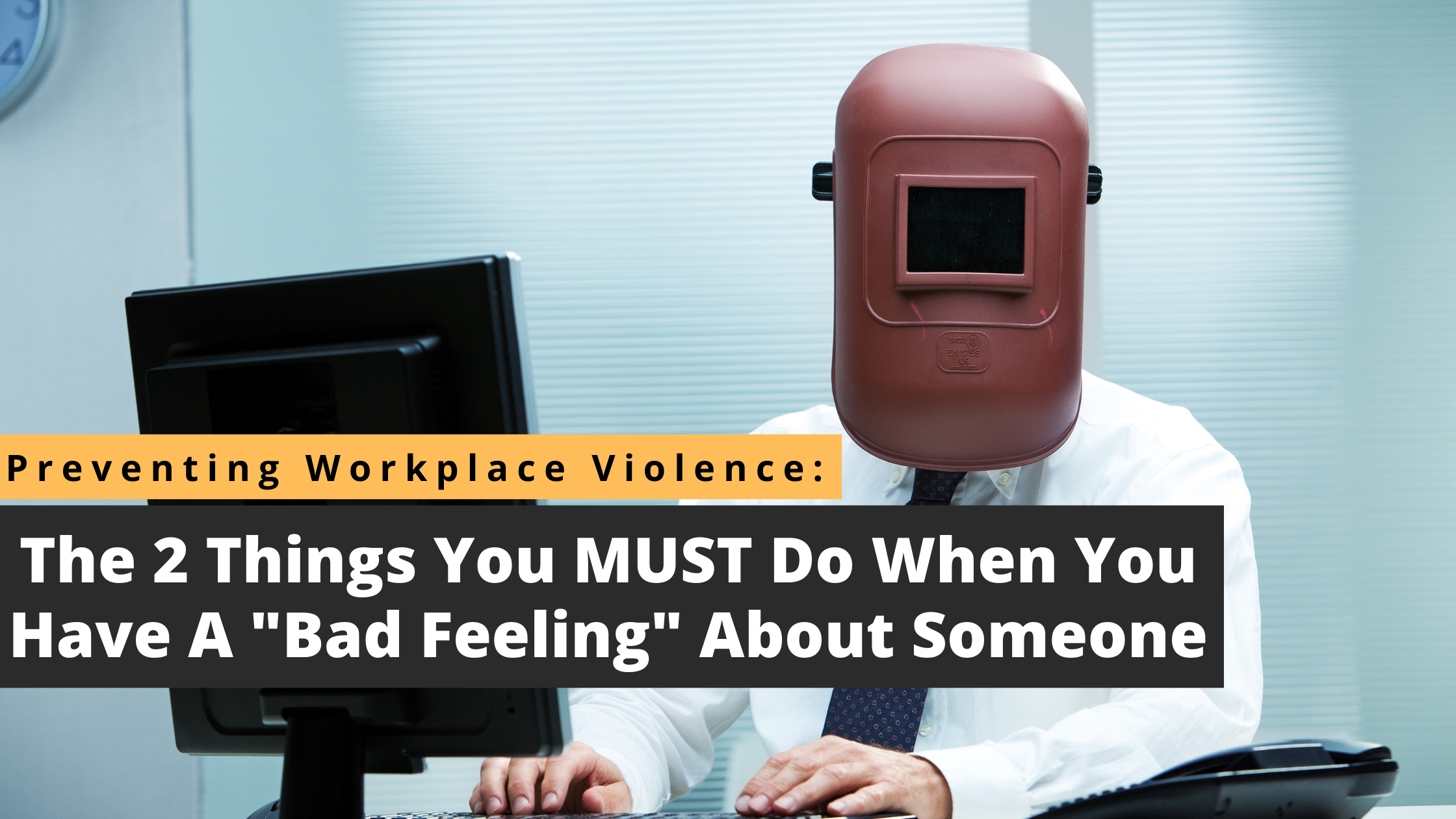Workplace Violence
Preventing Workplace Violence: The 2 Things You Must Do When You Have A “Bad Feeling” About Someone

“I can’t put my finger on it, but I have a bad feeling about that person.”
This is something we hear all of the time.
Whether we are conducting a risk assessment, consulting on a high-risk termination, or providing executive protection, it is very common for us to hear concerns from leadership that they have a “bad feeling” about someone within their organization.
But what do you do about it?
If you have someone at your organization that you are concerned about, like many; you may feel stuck between two emotions.
On one hand, you may be concerned that you are wrong about that person and are simply overreacting. You are wanting to avoid not only the embarrassment of possibly being wrong but the potential liability your company could be exposed to (depending on the action taken) out of your abundance of caution.
At the same time, you are haunted by the thought of doing nothing. That you could be right and if an act of violence were to occur, you would feel horrible knowing you possibly could have prevented it. But didn’t.
Am I right?
Well in this post, I am quickly going to dive into the two things you MUST do if you have a “bad feeling” about someone in your workplace.
First thing is first.
You must know that very rarely does a person commit an act of violence without displaying some sort of prior concerning behavior.
So if you have a gut feeling about someone that something is off. LISTEN to it.
At Strategos we call this your “spidey sense”.
Veterans of law enforcement, the military, and even many physicians will tell you that when your gut tells you something is not right; it is you usually right.
Our brains process an amazing amount of information, evaluating things, people, and situations thousands of times per second. With may more information coming in than we are able to consciously process.
Often that “gut” feeling is our subconscious trying to get our attention. Clueing us in that something is indeed not right.
This was brilliantly discussed in Malcolm Gladwell’s best-selling book, “Blink” where several examples were given highlighting the power of making a decision based on your immediate instinct.
In fact some studies suggest your chances of making the WRONG decision actually increase by up to 70% when you begin to second-guess yourself.
So learn to trust your gut.
But that doesn’t mean that just because you are right about someone in your workplace being troubled, that they are going to be responsible for an act of workplace violence.
So how do you determine if they are simply processing a life event and are needing someone to talk, or if they are indeed a threat to themselves or others in the organization?
Well, this leads us to the second thing you must do.
You must use a tool that allows you to objectively evaluate the situation. Preferably one that incorporates data from past events to assist you in accurately evaluating your situation.
Just having a bad feeling about someone is completely subjective in nature. It is completely reliant upon your thoughts, your feelings, and your opinion. This is why you are often left feeling stuck, not knowing what to do. Because you have nothing to compare it to.
By having an objective measurement tool, not only are you able to evaluate the validity of your concern, but you are also able to determine the level of risk you may (or may not) be facing. Understanding the level of risk you are exposed to is THE key in helping you determine the appropriate actions that you need to take.
Fortunately for you, we have taken our 20 years of experience and developed a FREE online behavior risk assessment tool.
It takes less than 2 minutes and provides you with immediate feedback letting you know how concerned you should be about the individual in question. It also provides recommended actions you and your team should take based on the answers you provide.
To access this tool for free click here. And feel free to bookmark that page and come back and use is as many times as you need.






